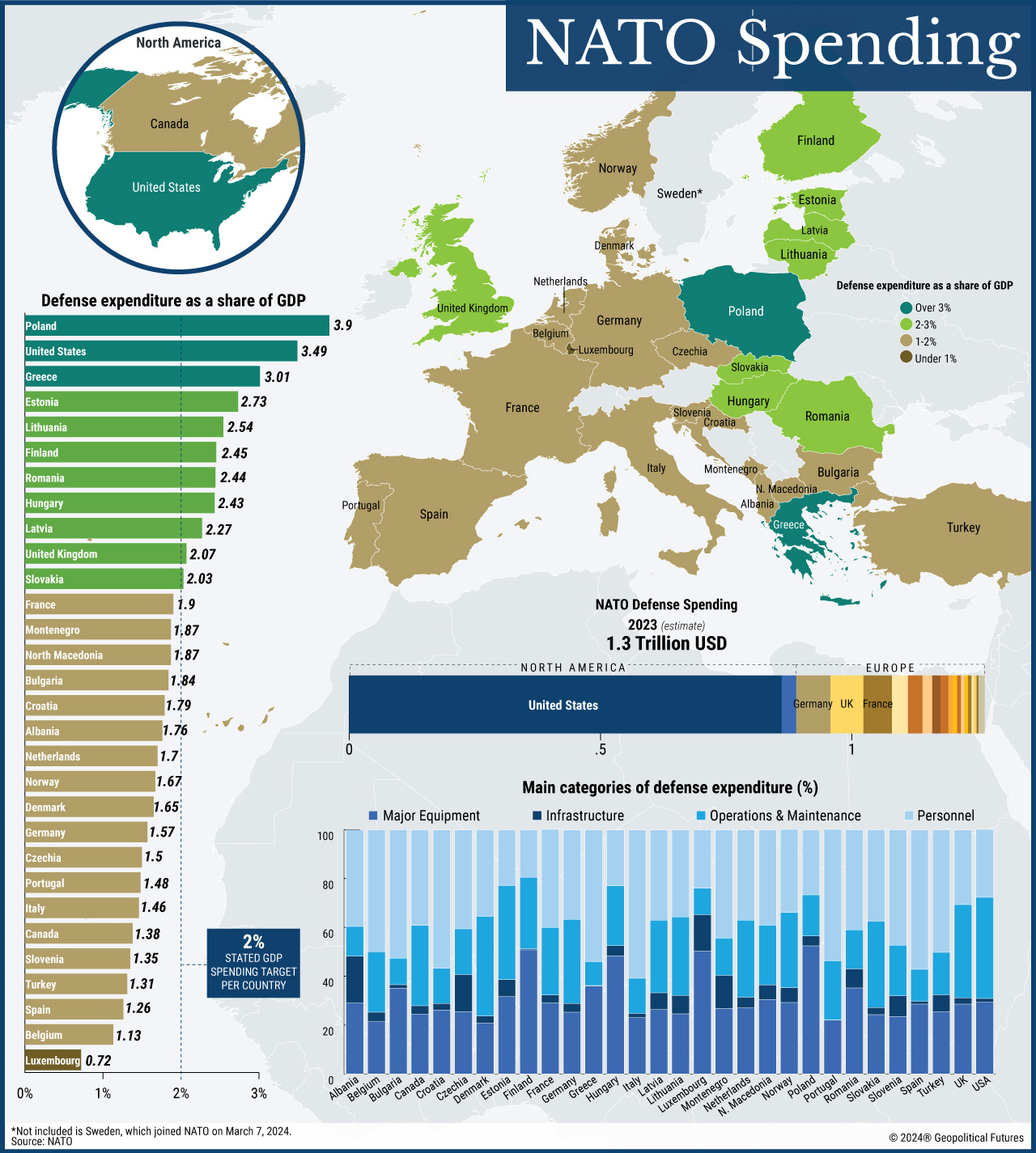In a meeting with NATO chief Jens Stoltenberg, Poland’s president advocated that each NATO member increase defense spending to 3 percent of gross domestic product to strengthen the alliance against Russian aggression. NATO faces the challenge of equitably distributing defense costs, centered on the 2 percent GDP spending goal, which was established after Russia’s annexation of Crimea in 2014. However, implementation has been inconsistent, and increased spending does not always enhance NATO’s collective capabilities.
In 2023, Poland exceeded the threshold, allocating over 3 percent of its GDP to defense, primarily on equipment. Other Eastern European nations along the frontline with Russia have acted similarly. Meanwhile, the U.S. has historically been the largest contributor to NATO defense. But Western Europe, despite its significant contributions to the defense of Europe, has not consistently met the 2 percent objective. Upcoming European Parliament elections may spotlight the necessity for greater European investment in NATO.




 Special Collection – The Middle East
Special Collection – The Middle East